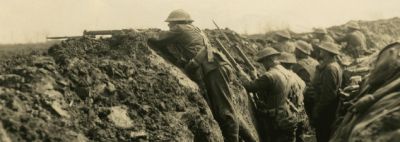Bob Cunis
Robert Smith Cunis was born on 5th January 1941 in Maungakaramea and after completing primary schooling at Hora Hora joined the Intermediate Section of Whangarei Boys' High School on 5th February 1952 in Form 1I. In 1953 he was in Form IIC.
While at Intermediate School the all round sporting talent he was to display in future life started to come through. He was 1st in the 880 yards Under-12 athletics race and repeated the feat the following year in the Under-13 group. He also represented the Intermediate School in rugby (2nd XV) and cricket (1st XI) and was placed in an Under-13 swimming race.
He entered Whangarei Boys’ High School on 2nd February 1954 and was in Form IIIE. That year he was first in the Junior Handicap Steeplechase and 3rd in the 220 yards Junior Athletics. In 1955 he was a member of the 2nd XI Cricket team but played some games for the 1st XI. And in swimming he again displayed his talent coming 3rd in two races in the Junior Championship that year.
In 1956 he was in Form VE and a permanent member of the 1st XI Cricket team, for which he received colours. He was also selected in the Golden Bloom Shield team. Bob excelled in swimming that year and was crowned the Intermediate Swimming Champion after wins in the 50 yards and 100 yards freestyle, winning both the Old Pupils Cup for champion and also the Arthur Tong Cup for most points in Marsden House. That year he also passed his School Certificate examinations.
1957 saw Bob achieving the status of Deputy Prefect. He was a member of the 1st XV Rugby and the 1st XI Cricket teams, receiving colours for both. In cricket that year he scored 99 and also took 8 wickets in the annual match against Avondale College. He was awarded the Briggs Memorial Cup for bowling at the annual prize-giving. In athletics he was 2nd in both the javelin and also the cricket ball throw and was a member of the School swimming team having come 2nd in the100yards Senior race. That year Bob also passed the Higher School Certificate exam and he left Whangarei Boys’ High School on 12th December 1957 to enrol at teachers training college.
While Bob went on to become a teacher and for a time was Principal at Maungakaramea Primary, and also as a teacher at Maunu Health Camp, it is for his involvement with New Zealand cricket that he today joins the inductees into the Fideliter Fellowship.
If Bob’s contribution to New Zealand cricket was assessed solely in terms of wick¬ets and runs, he would still be among the top echelon. But he gave the game much more than some stubborn batting and uncompromising seam bowling. He brought to it a warm humanity in his humour, an unorthodox and un¬lovely bowling action and an intense competitiveness that would see him endure longer in the game than many would have credited him with.
Bob played little age grade cricket in Northland. It was after he moved to Auckland that he achieved his first class debut in 1960 for Auckland against Northern Districts. That day he had bowling figures of 6 for72. Bob continued to have success at Plunket Shield level for the next couple of seasons until finally in 1964 he was first selected for the New Zealand test team against South Africa. The player he ousted was Dick Motz who for years had been the fast bowling star for New Zealand. Big shoes to fill but he approached it in style with his first test wicket of the South African batting star Graeme Pollock.
He missed the tour the following year due to some indifferent form but returned for the two home test series the next two years against Australia and England before embarking on the tour that firmly placed him in the record books of New Zealand cricket. By the end of that tour of England, India and Pakistan in 1969 he had become a main strike bowler, but strangely it was one sterling effort with the bat that had him entered into cricket folklore.
It came at Dacca, in the third test against Pakistan. New Zealand, 1-0 up in the series, needed just a draw to win a series away from home for the first time. But things went badly, and, after trailing on the first innings by 17 runs, they were 101-8 when Bob joined Mark Burgess before lunch on the last day. Dick Brittenden summed it up best when he wrote ‘When he walked out into that sultry heat, he could hardly have carried a heavier cricketing burden. He knew what it would mean to New Zealand cricket to win a series for the first time. He knew that if he did not survive, the match was lost. Although the standard of umpiring in Pakistan is usually better than it is in India, he felt he could not rely on it, for it is merely mortal to be aware of the howling mob which was behind the Pakistan team that day. Most of all, he knew how hard his mates had tried for the long months of that tour. He is loyal to his friends, and he would not let them down. He didn’t.’
Cunis defied the wiles of the Pakistani spin bowlers, and the worst wishes of 40,000 fervent spectators, as he lunged for¬ward in grim defence ball after ball for more than two hours while 96 priceless runs were added. He was eventually bowled for 23, and the New Zealand innings closed at 200. Pakistan still had hopes of victory and needed 184 in 150 minutes, but Bob knocked the top off their innings, claiming 4-21 in seven overs to settle matters. He had produced bigger scores and better bowling statistics, but never played a more crucial role in a test.
Such was his form on that tour and domestically that Bob was named the New Zealand Cricket Almanack Player of the Year 1969.
Bob’s last test series was against the West Indies in 1972 where he toiled away on unresponsive pitches claiming just 16 wickets on the whole tour. In all he played 51 tests for New Zealand.
Prior to that tour he had received an honour of a different kind when he was selected to tour Australia with the Rest of the World XI.
Upon his return to New Zealand he continued to play first class cricket for Auckland until being dropped in 1975 at which time he switched his allegiances back to Northern where he and Richard Collinge formed a most potent opening bowling attack. He finally retired at the end of the 1977 season having taken a total of 551 first class wickets, including 51 test wickets, at an average of 27.23. But for persistent injury these figures may have read even better.
It must be said that Bob Cunis was never a bowler of express pace but what made him a class bowler was his competitive spirit and a belligerence that made him one of the first guys picked for most teams he was available for, always the most reliable of performers in the very toughest going.
Bob went on to coach the New Zealand cricket team for four years from 1986 to 1990 and he took to that role the same determination that he had shown throughout his playing career.
It was with sadness that the WBHS Old Boys’ Association recorded Bob’s death on 7th August 2008.





